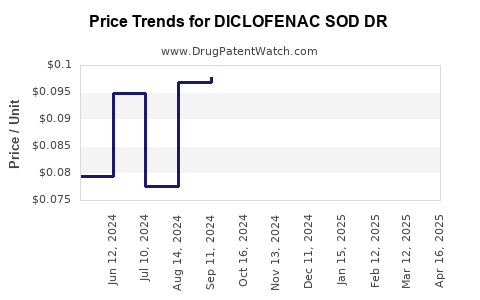Drug Price Trends for DICLOFENAC SOD DR
✉ Email this page to a colleague

Average Pharmacy Cost for DICLOFENAC SOD DR
| Drug Name | NDC | Price/Unit ($) | Unit | Date |
|---|---|---|---|---|
| DICLOFENAC SOD DR 50 MG TAB | 61442-0102-10 | 0.07047 | EACH | 2024-11-20 |
| DICLOFENAC SOD DR 50 MG TAB | 61442-0102-60 | 0.07047 | EACH | 2024-11-20 |
| DICLOFENAC SOD DR 50 MG TAB | 61442-0102-01 | 0.07047 | EACH | 2024-11-20 |
| DICLOFENAC SOD DR 50 MG TAB | 68001-0280-00 | 0.07047 | EACH | 2024-11-20 |
| DICLOFENAC SOD DR 25 MG TAB | 68001-0279-00 | 0.82881 | EACH | 2024-11-20 |
| DICLOFENAC SOD DR 75 MG TAB | 72888-0111-60 | 0.07204 | EACH | 2024-11-20 |
| >Drug Name | >NDC | >Price/Unit ($) | >Unit | >Date |


